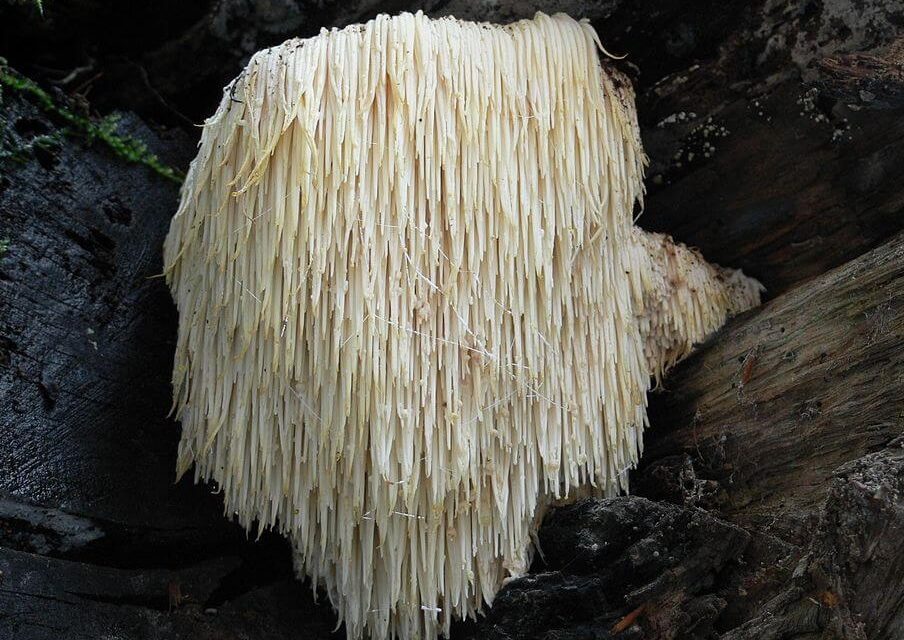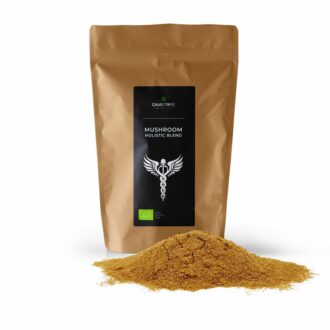Lion's Mane 25/09/2019
Lion’s Mane, Latin Hericium erinaceus, is a rare medicinal mushroom, which is for its unique effects on the body an indispensable jewel of traditional Chinese medicine.
The fungi looks like a sea coral, where its name comes from. With its appearance, it is also likened to the mane worn by lions. It is therefore increasingly nicknamed as Lion’s Mane. It grows on tree trunks and stumps, thus it is a parasitic fungus. It can be found in the northern hemisphere, especially in Asia, Europe and North America. In the wild, however, it occurs relatively rarely.
In addition to its healing effects on the body, it is part of traditional Asian dishes for its great seafood-like taste.
HISTORY
The fungus has been known for centuries as the medicine of original healing almost all over the world. It was popular mainly in China, where it served as a prevention against cancer. In North America, it was used for its anti-inflammatory effects – it was used externally to help treat open wounds.

CHEMISTRY
Lion’s Mane is rich in polysaccharides, proteins, amino acids and polypeptides. It also contains high amounts of vitamins and minerals, the main ones being potassium, zinc, iron, selenium, phosphorus and germanium.
There are also high amounts of antioxidants that support the vitality of the body and contribute to longevity.
EFFECTS
The fungus is valued for its antidepressant effects. It not only relieves stress and tension, it also contributes to the harmonization of an organism weakened by stress factors. It can also support the immune system and treat somatic diseases. Hericium helps to harmonize the digestive system – relieves stomach and abdominal pain, flatulence and nausea. It helps with the treatment of intestinal inflammations and is able to optimize blood cholesterol levels. Because of its anti-inflammatory and antibacterial effects, it is a suitable drug for autoimmune diseases. For example, it serves as an anti-cancer agent.
Unlike other medicinal fungi, Lion’s Mane is unique in its effects on cognitive functions. Recent scientific studies confirm that the use of this fungus produces BDNF and NGF proteins (brain neurotrophic factor and nerve growth factor). This means that the fungus participates in neurogenesis – it promotes the growth of new brain cells and thus allows the regeneration of the nervous system. It helps individuals with degenerative diseases such as Alzheimer’s and Parkinson’s disease, multiple sclerosis, and dementia to relieve their symptoms.
The unique effects of this fungus on the brain, of course, are beneficial also for healthy individuals. Lion’s Mane improves attention, concentration, memory and sharpens the senses. It promotes neuroplasticity – that is, improves the ability to learn new skills and information. It is an ideal nootropic not only for students but also for all professions requiring high mental activity.
Hericium is also suitable for external use. It can be used for open wounds, eczema, inflammation, and acne. It also helps to stop bleeding.
PREPARATION AND DOSAGE
Extract
Lion’s Mane in the form of the extract is used in the amount of 0.5 g – 1g per dose. We recommend taking it once or twice a day. The extract has a slightly bitter taste, so it is suitable to dissolve it in cocoa, coffee, tea or another favorite drink. We recommend flavoring with milk or honey. The extract can also be mixed into dishes such as yogurt, porridge or smoothie.
COMBINATION
It is advisable to combine Lion’s Mane with other medicinal fungi such as Reishi, Cordyceps or Chaga.
-
Out of stock
-
TOP










